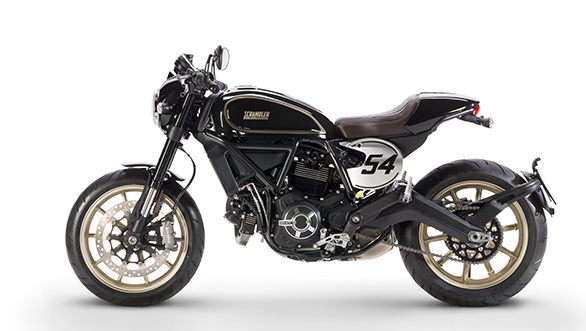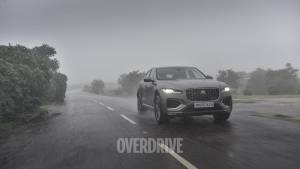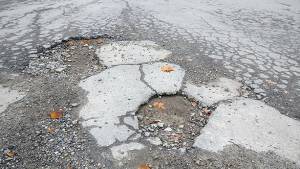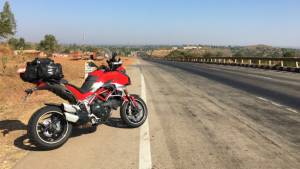Buying a big bike? Here are 5 things you need to know
My personal big-bike adventure started with Ferine, my Triumph Street Triple roughly two years ago. I was extremely excited about the Triumph, and having put just under 12,000km on it, I have to say that I'm a far wiser man. Riding a big motorcycle in India is not the same as riding an Indian-made small one. And I don't mean engine performance when I say that. There's a vast gulf in expected and delivered performance and service that you need to account for to understand this fully. These things are not meant to discourage you, but more to set your expectations at a more realistic level.

They are not designed for India
This is perhaps the most important thing of all. A Hero Splendor in the original guise as well as the new one is designed for us. That means that within the bounds of cost, target audience and intended role, the motorcycle is designed to perform to our expectations. Expectations of economy, performance, refinement and capability. The crucial part? It is expected to deliver these in our conditions.
That last bit changes everything. Because India is uniquely abusive to machinery and the wear and tear adds up. Or at the very least, it needs extra effort to keep in check. To give you an example, I favour two oil changes when the motorcycle is new, one after about 400km and one at first service. Most service professionals dealing with big bikes will tell you that while the 10,000- or 12,000km service intervals are fine, you really should try and get all the filters checked and cleaned or replaced at half that. This isn't a thinly veiled attempt to increase the service business though it cannot but help them. The logic for half-ly filter checks is simple - Indian riding conditions are vastly dustier than the bikes are designed for.
Then comes suspension and set-up. A sporty European machine can be set up to be very stiff. The people who are in charge of setting up the motorcycle will assume - correctly - that bump absorption will be required less often than the ability to keep the chassis attitude stable. The suspension will almost never be called upon to travel rapidly through most of its strokes as the wheel travels instantly up or down as it finds a bump or crater. In a fraction of a second, the compression damping and rebound circuits will be fighting to keep the chassis attitude stable and the tyre in contact with the tarmac. This is hard work. But since the suspension doesn't have to do this, the tuning can focus instead of more useful things like cornering response and chassis stability and performance over good surfaces without too many imperfections.
Imagine what happens when this sort of a state of tune arrives in India? When inevitably, a big hit arrives, the suspension cannot cycle fast enough and something else has to absorb the energy of the impact. Or the wheel loses contact with the ground. Or both.
In the case of my Street Triple, this was an issue that I found annoying. I had to check tyre pressures twice as often as normal and ensure that I had the gas open over all the bumps and craters to give the suspension its best shot at absorbing the impact. And still, many times, it felt like the rim rather than the forks took the hit. I didn't break the rim but it wasn't a pleasant feeling, I assure you.
My advice? Accept that owning a big bike may be vastly more thrilling than a small made-for-India motorcycle but it may not always be smooth sailing. You may not be able to ride as carefree as you like. It's a small wrinkle but better you know than you don't.
Second, pay for more sophisticated suspension when the option is available. The Versys and the Tuono revealed to me a world of capability simply because their suspension was more capable in being able to manage traction and chassis attitude over a wider range of conditions. This allowed me to ride swifter over worse roads and enhanced my experience. I loved the fact that I never had to worry about the motorcycle because the suspension was so on the ball.
Similarly, I decided to stretch my budget and get the Ducati Multistrada 1200S instead of the cheaper base model which has manually adjustable suspension - and you can bet that my Multi's suspension will not be left alone as I find a softer, more absorptive set-up for our conditions.
The day when these motorcycle will be designed for India will come, to be sure. We remain among the handful of really big markets where larger displacement motorcycles are still too small a percentage of total sales. Just like the car guys already specify, for instance, a higher aspect ratio for tyres or greater ground clearance for cars headed here, motorcycle makers will do similar tweaks for our market as well as soon as the volumes allow.
The other solution is to look for off-road capable models which typically have more sophisticated suspension than road bikes. The fact that these fit our conditions better than sportsbikes or large adventure tourers is not rocket science. But, as usual, we wait for logic to catch up with desire. For manufacturers as well as enthusiasts to hit pay dirt, as it were.
Service and spares will not be a fairy tale
It might sound like I am defending the manufacturers but not every spare part will be in stock. The more conscientious brands will try and source them as fast as they can. Or let you source parts for yourself and not grudge you that loss of business.
But the way it works is that each manufacturer makes an educated guess at what spares inventory it needs to carry. This inventory is unsold (but paid for) stock and therefore very expensive. So while Ducati may have sold, say, five Superleggeras in India, you can bet that its carbon-fibre bodywork will have to ordered if you crash one. The chances of you crashing one are minimal because none of the five people buying the Rs 1 crore plus motorcycle are likely to ride their Ducatis. Similarly, if Harley's most popular model is the Street 750 and it has many Indian aggregates, its spares will be easier to come by at service than for, say, the Breakout.
Usually, a manufacturer's service set-up has a set process, and certain parts can take up to six weeks to arrive. If you're unlucky this means your motorcycle will go off the road if the part is critical enough. I accept this as part of the challenges of owning a big bike in India. And honestly, no matter how unfair it sounds, until the volumes come up to scratch, this situation is unlikely to change significantly.
My tip? Brands that sell bigger numbers - Harley-Davidson and Triumph, for instance - are more likely to have stuff in stock than brands that have just opened shops or sell fewer numbers, like Aprilia or MV Agusta.
Second, if you really want the same sort of service experience that you get with your Hero or Bajaj or even KTM, then you're not ready for a big bike. It simply isn't as effortless an ownership experience yet.
Every manufacturer makes significant revenue from their service, and every one of them wants your business. But carrying more spares and inventory hinges on volumes. That is the reason why Splendor or Maruti parts are everywhere but Aston Martin parts are superhard to locate.
You will encounter some hostility
While people will generally admire your shiny, expensive steed, you will eventually encounter hostility. It might be because you denied them the chance to get in the saddle for a selfie or because something about your behaviour, real or imagined, caused you to come across as entitled. Owning a big bike doesn't give you a single additional right or privilege and don't you forget it.
Some of the hostility might be inherited by you vicariously. For example, the famous Lavasa road outside Pune is roundly abused by bikers from Pune who basically treat it like a racetrack. This is idiotic. But the fallout is that anyone in riding gear is automatically the villain on this road. Take any road that is popular in India with motorcyclists and chances are that the same hostility arrives there, thanks to our collective bad behaviour.
My tip? Never forget that despite how riding your 6,000PS missile makes you feel, you're a motorcyclist. A representative of our tribe. Which means you have to be on best behaviour. You simply cannot afford to be a prat.
Displacement does not replace skill
All the electronics in the world cannot make up for a lack of judgement. There is no automatic tree collision prevention system. Or an automatic stupidity assist. And riding skill is not about knowing how to open the throttle or where the clutch is. Skill comes from knowing how to navigate through a chaotic, potentially deadly real world. Skill comes with practice. Skill comes with experience.
That means, now that you've got the latest and the greatest, it is time to treat it with respect. For this, you will need to acquire skills. The OVERDRIVE-IndiMotard TWO School is a good place to start. The California Superbike School only happens twice early in the calendar year, but they're even better. Go find a school. You will find the training invaluable and you will also discover one of the most fun weekends of all. I would say stay away from race schools or racing schools. Their focus is elsewhere and the benefits you will see, while still better than nothing, are focussed on racing rather than riding well.
Finally, ride. It is, after all, a motorcycle not a decoration or a wall hanging. Go ride your pride and joy, that is what it was made for. Motorcycles are best experienced from the saddle, on the move.












